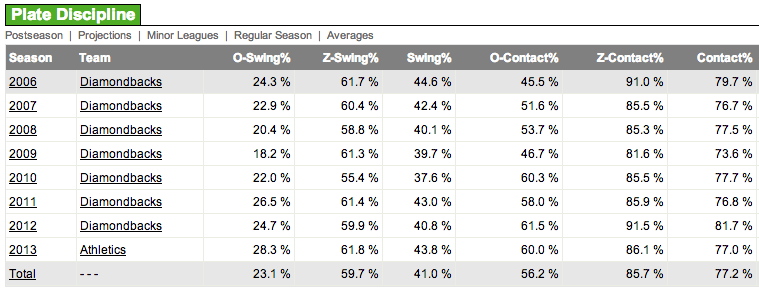The New York Mets outfield situation is a wide open competition heading into their official spring training full-squad workouts on February 22. At this point, the one player that seems to have locked up an everyday role is Curtis Granderson.
The other three outfield positions seem to be coming down to a battle between Juan Lagares, Eric Young Jr., and Chris Young. The two players that are performing the best offensively will probably win the other two outfield spots.
Mets manager, Terry Collins, has said on numerous occasions that he likes Young Jr. in the leadoff spot in the order, and reiterated it this morning in his first televised press conference of the season via Anthony DiComo of MLB.com:
What Eric Young did for us last year, I thought saved us in the second half of last season -- and not just the stolen bases. People forget about what a great job he did defensively in left field last year, the plays he made.
If Young Jr. is the early favorite to be playing in left field and hitting leadoff, then that means the center field job will boil down to second year defensive phenom Lagares or Young.
Can Young beat out fan favorite Lagares for the starting center field job this spring?
Young has 20/20 potential. This is something that he has done multiple times at the major league level. While you can argue that Lagares has similar potential, many would agree that he just isn't there yet. The problem with Young has been inconsistency. Since his breakout 2010 season, where he batted .257, hit 27 home runs, and stole 28 bases, his offensive numbers have been on the decline.
Even though his numbers seem to be on decline, when you scrape away the strikeouts, there is a guy that is ready to bust out offensively.
What has caused Young to struggle offensively since his back-to-back 20/20 seasons in 2010 and 2011? Is he simply on a decline, or is there really a chance that this guy is going to break out in 2014 for the Mets?
Let’s take a look at some numbers to see if we can figure this enigma out.
When looking at Young’s pitch types over the past few years, going back to 2010, there seems to be an interesting trend. Young has seen a dramatic increase in changeups, and seeing less sliders and curveballs. It seems that pitchers are trying to keep Young off balance by changing speeds, and not with a steady diet of breaking balls.
The next thing to look at is his plate discipline to see if he is making the proper adjustments.
When looking at his swing and contact rates, not much has really changed over the past few years that would lead one to believe that Young is in decline. Take a look at the table from Fangraphs.com below:
Young’s O-Swing percentage has actually increased, which means he is swinging at more pitches out of the strike zone than he did in 2010. His Z-Swing percentage has also increased—so overall, Young is swinging at more pitches.
But here is the interesting stat—Young’s contact rate has remained relatively flat over the past four seasons, and actually improved in 2012. This would mean that Young is doing a good job adjusting, as his contact rate has not dropped off significantly.
So if Young is swinging at more pitches, and making contact at the same rate as he did in his 2010 and 2011 season, where is the problem?
The answer can be found in his BABIP (batting average on balls in play). Young’s BABIP has steadily declined, meaning that pitches that he is making contact with, and putting in play, are being reeled in as outs. Young’s ground ball percentage has decreased since 2010, while his line drive percentage has increased. His fly ball percentage has remained flat, and his HR/FB ratio has also slightly dipped.
What does all this mean?
Young is not a player that is on the decline. His contact rate has remained the same over the past four seasons. The major difference seems to be that he is hitting less ground balls and more line drives.
That doesn’t sound like a bad thing, but a line drive has better chance of being caught in flight for an out, and it prevents Young from using his speed to leg out some of those ground balls. His HR/FB ratio also dropped, meaning some of those fly balls have become outs.
Young has basically had some bad luck over the past two years. The Mets must have seen something similar when they decided to sign the 30-year-old outfielder to a one-year contract worth $7.25 million. It's not likely they paid him that kind of money to be a fourth outfielder.
If Young can reverse his fortune and sustain his hot streaks, Mets fans will be pleasantly surprised with Young in 2014.
Read more MLB news on BleacherReport.com
- Login to post comments

